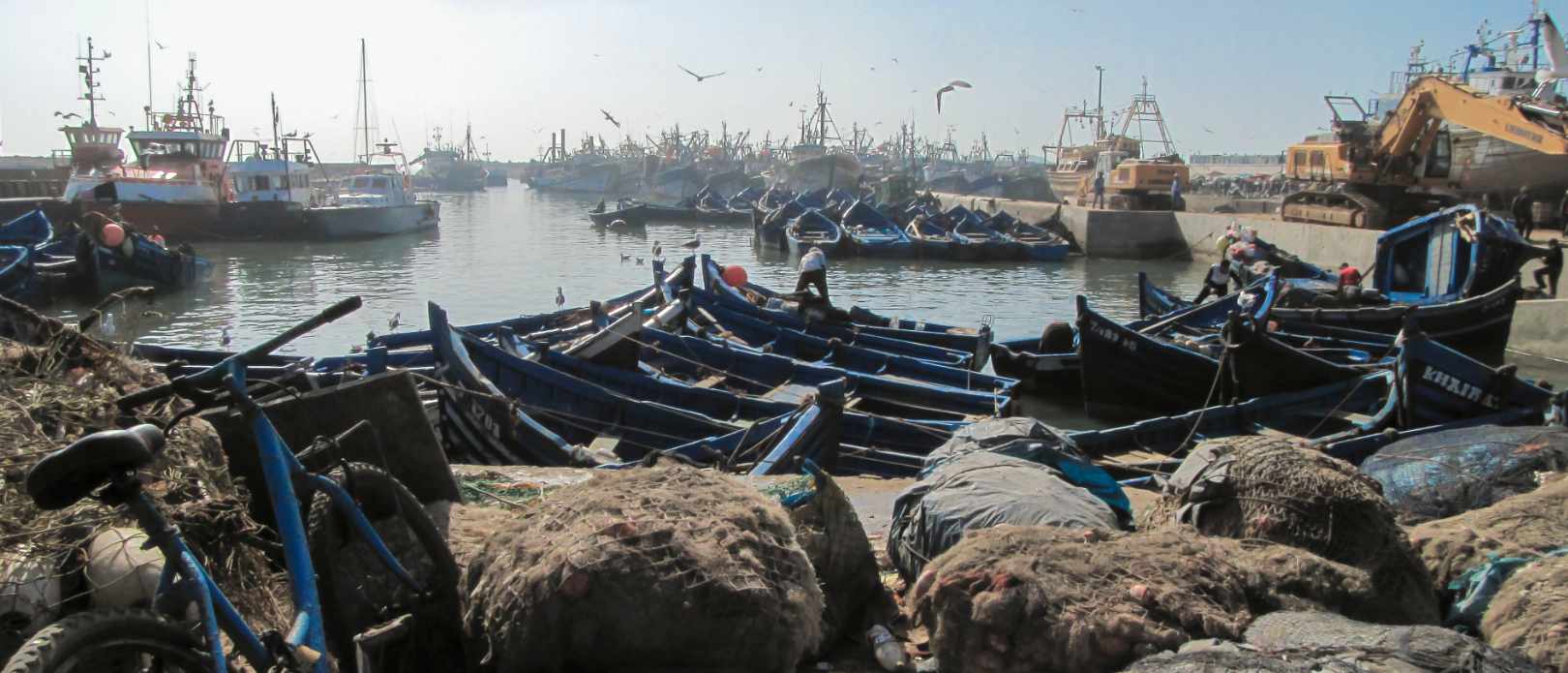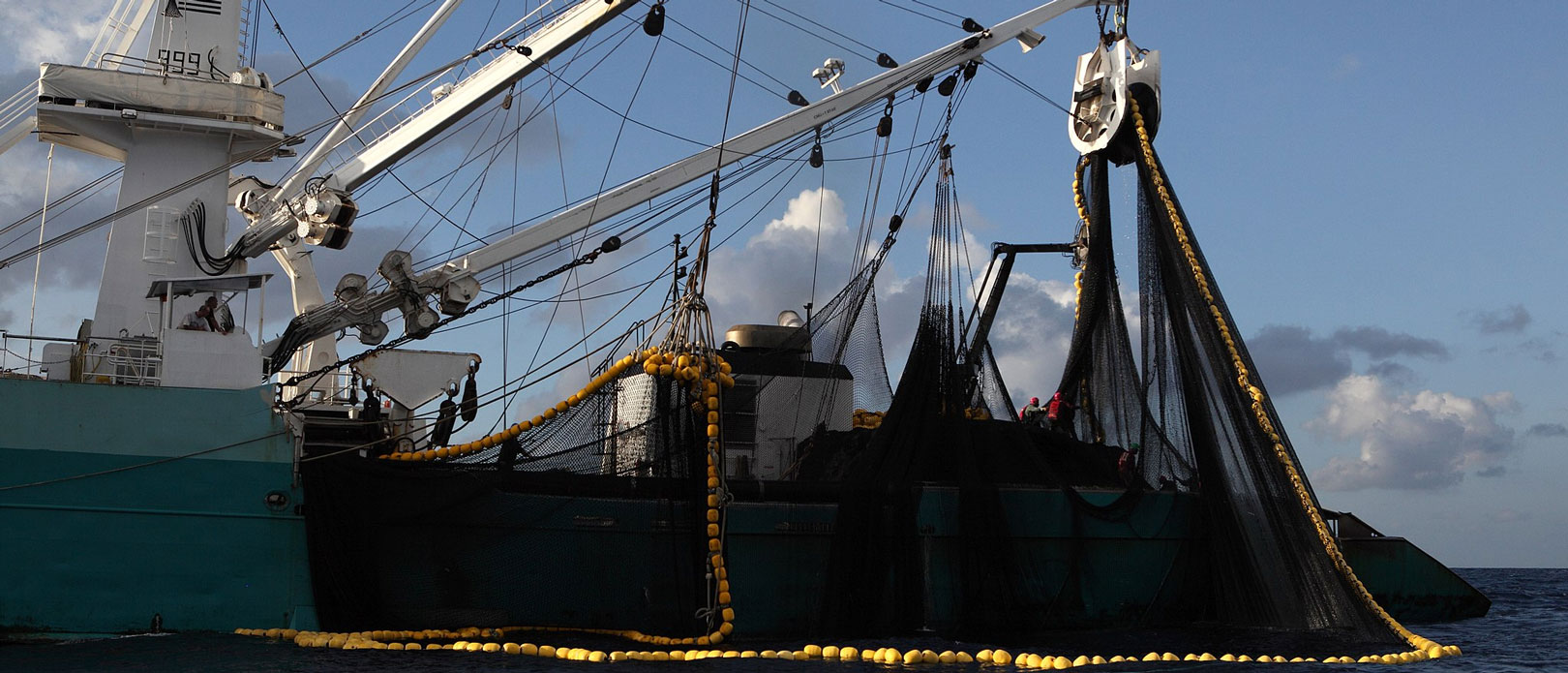Labour abuse and illegal fishing
Study maps risks of labour abuse and illegal fishing at world's ports

A new study has identified the regions and ports at highest risk for labour abuse and illegal fishing. The picture is not directly associated with the findings of the study. Photo: G. Aneer/Azote Library
Of more than 750 ports assessed around the world, more than half are associated with risk of labour abuse or illegal fishing
- Study identifies the regions and ports at highest risk for labour abuse and illegal fishing
- Coastal regions off West Africa, Peru, Argentina, the Falkland Islands, and the Azores had higher risks for labor abuse and illegal, unreported and illegal fishing
- The new assessment can help large seafood companies identify and remove potential labour abuses and illegal fishing from their supply chains
PORTS' PERILS AND PROMISES: Monitoring the world’s fishing fleets for labour abuse and illegal fishing can be as challenging as the ocean is vast, but new data could help companies and countries intervene more effectively.
Academics from Stanford University and Stockholm Resilience Centre have identified the regions and ports at highest risk for labour abuse and illegal fishing.
The findings, published in Nature Communications, indicate two main risk factors: the country that a vessel is registered to, also known as its “flag state,” and the type of fishing gear the vessel carries onboard.
The results offer policymakers and regulators with a set of vessel characteristics and regions to pay more attention to when sourcing seafood.
We hope these findings can help to inform strategically expanded enforcement, focus development aid investments and increase traceability, ultimately lowering the chance that seafood associated with labour abuse or illegal fishing makes its way to market.
Elizabeth Selig, lead author, Stanford Center for Ocean Solutions
Actions by global producers
Using an online survey of experts, the researchers also found that labour abuse and illegal, unreported and unregulated (IUU) fishing are globally pervasive: Of more than 750 ports assessed around the world, more than half are associated with risk of one or both practices.
However, in addition to revealing the global extent of these risks, the study also highlights potential pathways to reduce these risks through actions at port that detect and respond to labour abuse and deter the landing of illegally caught fish.
Said co-author Henrik Österblom, science director at the Stockholm Resilience Centre:
“The ten largest seafood producers in the world have committed to reduce the risk of IUU fishing and labour abuse in their operations as part of their commitments to ocean stewardship through the SeaBOS initiative. They have asked us to help them prioritize their voluntary actions and this study represent our assessment of how they can identify potential labour abuse and illegal fishing from their supply chains."
Higher-risk regions
For fishing vessels, coastal regions off West Africa, Peru, Argentina, the Falkland Islands, and the Azores had higher risks for labor abuse and IUU fishing. The model also demonstrate how vessels registered to countries that have poor control of corruption, vessels owned by countries other than the flag state and vessels registered to China have a higher risk of engaging in illegal activities.
Chinese-flagged vessels, comprising the world’s largest fishing fleet, dominated the data and were thus analyzed separately. For transshipment, certain fishing gear types – like drifting longliners, set longliners, squid jiggers and trawlers – were found to be higher risk.
The study also showed a strong presence of foreign-flagged vessels in fishing grounds thousands of miles away from where they bring their catch to port. This suggests that ports with weak monitoring standards can incentivize illegal activities far away, highlighting the need for coordinated regional action.
.jpg)
Risk maps for labor abuse and illegal, unregulated and unreported fishing at port. The maps indicate risk scores of ports assessed in the survey for (a) labor abuse and (b) illegal, unregulated and unreported fishing. Blue indicates lower port risk scores and red denotes higher risk scores.
The promise of ports
The study team analyzed the effectiveness of port measures for mitigating risks of these illegal practices. For labor abuse, they analyzed how long vessels spend in port, finding that riskier vessels have shorter port durations, which reduces the odds that port officials can intervene or that workers can access port services.
“Ports are one of the few places to identify and respond to labour abuse,” said Jessica Sparks, a fellow at the Stanford Center for Ocean Solutions and associate director at the University of Nottingham Rights Lab.
“We need to ensure that policies and practices allow fishers to access trusted actors and services at port so they can safely report on their condition.”
Read Revealing global risks of labor abuse and illegal, unreported, and unregulated fishing
Svensk sammanfattning
Av mer än 750 utvärderade hamnar runt om i världen var nästan hälften förknippade med risk för illegalt fiske eller tvångsarbete.
- Forskarna har använt en ny metod som kombinerar satellitdata, maskininlärning och expertenkäter för att kartlägga vilka regioner och hamnar som är mest utsatta för olaglig verksamhet.
- Högst risk för olaglig verksamhet identifierades i samband med omlastning, då besättning och fångster utbyts mellan fartyg, särskilt då detta sker ute till havs.
- Kusterna utanför Västafrika, Peru och Azorerna hade högst risk för arbetskraftsmissbruk och olagligt, orapporterat och oreglerat fiske (så kallat IUU-fiske).
- Fartyg registrerade i länder som har dålig kontroll över korruption, fartyg som ägs av andra länder än flaggstaten, och fartyg registrerade i Kina, uppvisade en högre risk att ägna sig åt olaglig verksamhet.
- Den nya metoden kan hjälpa stora fisk- och skaldjursföretag att identifiera och eliminera risken för arbetskraftsmissbruk och illegalt fiske i sina leverantörskedjor.
"De tio största producenterna av sjömat i världen har förbundit sig att minska risken för IUU-fiske och arbetskraftsmissbruk i sin verksamhet, som en del av sina åtaganden om havsförvaltning genom SeaBOS-initiativet. De har bett oss att hjälpa dem att prioritera sina frivilliga åtaganden och den här studien är vårt sätt att visa hur de kan identifiera potentiellt arbetskraftsmissbruk och illegalt fiske i sina leverantörskedjor”, säger medförfattare Henrik Österblom, forskningschef vid Stockholm Resilience Centre.
Studien är resultatet av ett samarbete med forskare från bland annat Stanford University, University of British Columbia, University of Tokyo och James Cook University.
Selig, E.R., Nakayama, S., Wabnitz, C.C.C., Österblom, H., Spijkers, J., Miller, N.A., Bebbington, J., Decker Sparks, J.L. 2022. Revealing global risks of labor abuse and illegal, unreported, and unregulated fishing. Nature Communications
Media contacts
Owen Gaffney, Stockholm Resilience Centre, Stockholm University: 46734604833 owen.gaffney@su.se
Elizabeth Selig, Stanford Center for Ocean Solutions: 919 619 6797, eselig@stanford.edu
Katie Jewett, Stanford Center for Ocean Solutions: 415 847 9146, kjewett@stanford.edu








